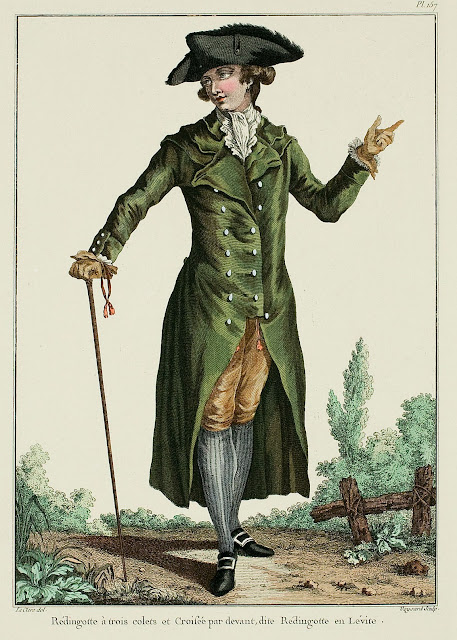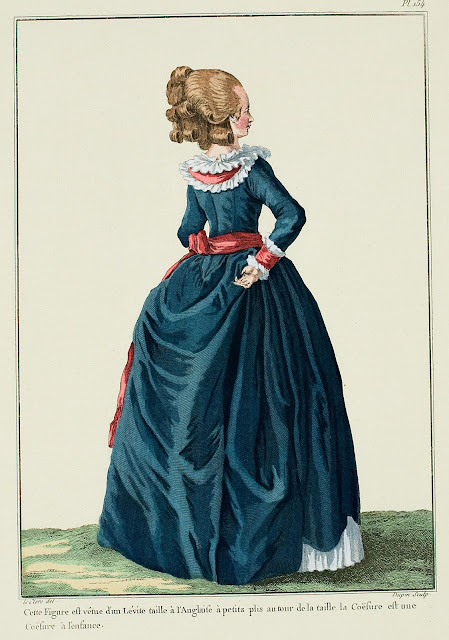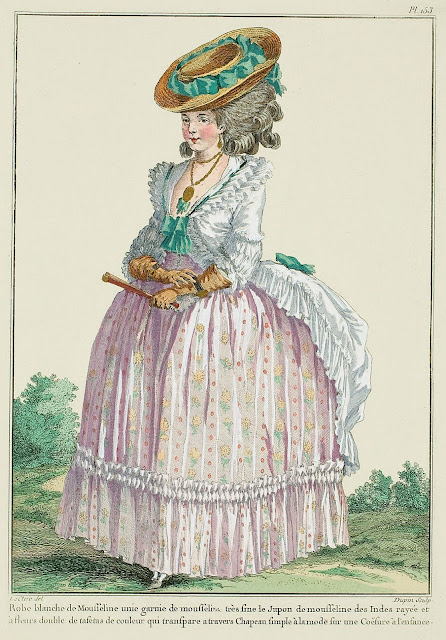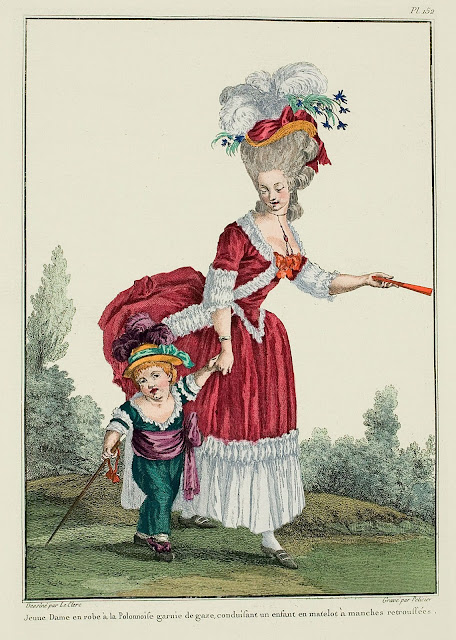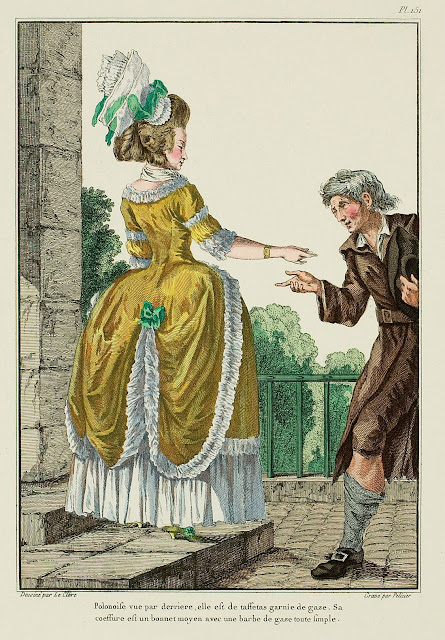Galerie des Modes, 37e Cahier, 4e Figure
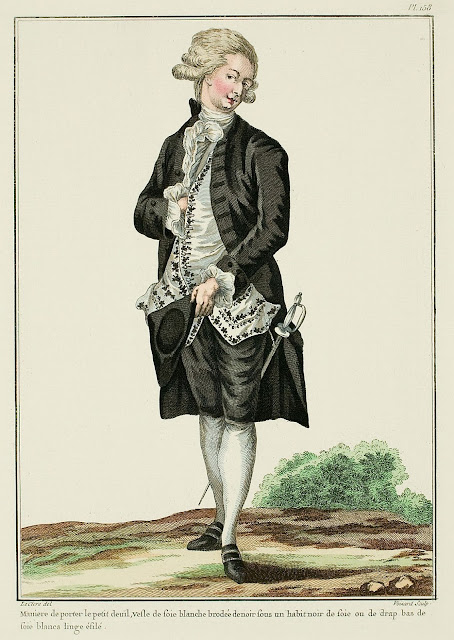
Manner of wearing informal mourning. Vest of white silk embroidered with black, under a black coat of silk or wool. Stockings of white silk. Fringed linen. (1781) The Galerie des Modes gave this plate of a mourning outfit and the one reproduced as number 162 on the occasion of the death of Marie-Thérèse of Austria, mother of Marie Antoinette, on the 29th of November 1780. Regarding this court mourning dress: "There is a book which will teach you when to put on black stones or diamonds, to wear caps of black étamine* or a gauze kerchief. It will then tell you in what manner one cuts a mourning whose days are irregular. You will learn in this useful book that one wears black for the larger part of it, and that if the mourning, for example, is for fifteen days, black is worn for eight days and white for the following seven. "In Paris one wears mourning for one's parents, for monarchs, princes and princesses of Europe; mourning is never worn for a friend.











